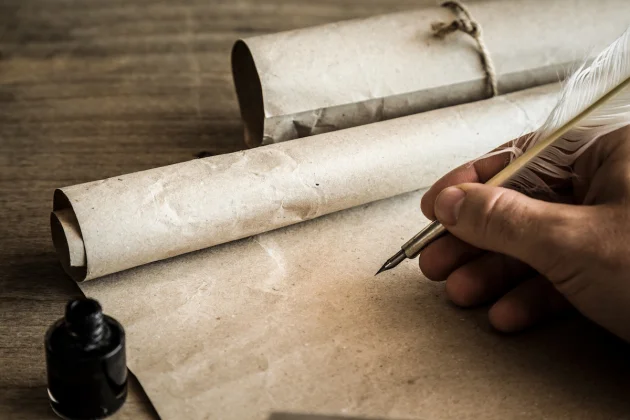How to write the perfect artist biography

To sell your art, it is vital to include a biography in your marketing package. A biography is a compact text informing the reader who you are and what you have achieved. Whether you showcase your work online, off-line in an art gallery or exhibition, people want to know more about you. Potential buyers are interested in your background, views, style and technique. This information will help them connect with your art. So, tell your public about yourself and what makes your work special! It will make you stand out.
Where to start
Now, you are an artist but not necessarily a gifted writer. This does not have to be a problem; high literature is not needed. Just tell your story. About where art started for you. Were there any specific circumstances leading to your urge to create? Did you grow up in the city, or in the country? Explain how this has influenced you. And what came next: did you go to a famous or not so famous art school, or are you self-taught? Who has inspired you? Have you exhibited your work before, where?
It is really not so difficult. But there are some ground rules – follow them and your biography will be sound and inviting.
Be brief
The first thing to know is you can be brief. An A4 should cover it: 300-350 words is enough. A compact text is preferable because you don’t want your public having to plough through pages and pages to get a first impression: they will soon give up.
A compact text needs some time and thought. You must decide what should really be mentioned, then write and edit it. But in your first draft you don’t need to worry about every dot and comma. Just write down what your journey in art has been so far. What led you to use the medium you work with, and the style and colours? The real editing comes later.
Know what your style is
To write about your artwork and how you have arrived at the result, you need to define and describe what it is you create. What is your style called, which trend, movement or type does it belong to? For instance, realism art, conceptual, abstract, authentic paintings, prints, or a mixture? Can you summarize how creating this type of art makes you feel: is it passion, freedom, releasing emotions, coping with life? Do you have a specific message to the world? Include this.
Know your audience
Defining your style helps identifying your audience. Who are you hoping to target? Knowing this is important: it will bring into focus how and where to sell your art, and what to include in your artist biography. Addressing your target audience connects you, the artist, with your potential clients. Target the very people who might be interested in your type of art.
You could use the analytics on your social media, or Google analytics through your own website, to know more about your visitors. Are they young, middle aged? Platforms are frequently used by quite distinct age groups. Facebook is popular with the older generation, Instagram is the trendy platform often used by artists and other interested parties, on average a bit younger than the Facebook public. TikTok is popular with a young public.
Try to write your biography text aimed at your target group. You could consider including some of their specific jargon. Don’t bombard your readers with irrelevant information. The idea is to connect with your audience.
Vital contents in your biography
Vital contents in your biography should be:
- Your name, of course.
- Include a professional photo: the artist at work. Not a selfie on the beach.
- Background, upbringing (place of birth), current situation (where do you work/live now).
- Education, training, technique and style, art medium; philosophy.
- Answer questions an art collector could have
- Include your achievements, articles you were in, awards you have received, exhibitions you took part in, upcoming projects and exhibitions.
Important:
- Write in the third person
- Include keywords so that search engines will find you
Editing your text
When you have created your draft text, start editing.
Reread what you have written so far. Look out for repetition, organise your biography according to ingredient (for instance: keep the information about your education, or techniques etc, in one place. They are ‘mini chapters’. Don’t repeat elsewhere in your text).
Let somebody else read your text and welcome constructive feedback. Your text should be easy and pleasant to read.
Make sure the final draft is free of spelling mistakes. Spelling mistakes will make your text -and you- look unprofessional.
If spelling or editing is an obstacle, professional services are available. For proofreading, many use Grammarly. Online Gallery also offers editorial services.
Easy reading is hard writing
Easy reading is hard writing, is a known fact among professional text writers. But it is worth the effort. Use the advice mentioned above and you will get there. Remember: a compact artist biography is a good biography. This will guide you. Just keep it informative and include some details your target public will like to know about you.
Now share
When the job is done, share it. Use it on your website, in your webshop, on social media, in press releases, in articles. This is a great way to reach art lovers: your potential clients. And once your biography is out there in the world, don’t forget to keep it updated. Because you as an artist are not static: you grow and move forward and this is reflected in your art.
Do you need help with writing your text? Check out our editorial services!


